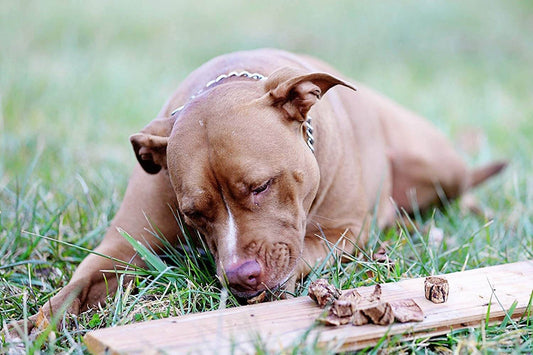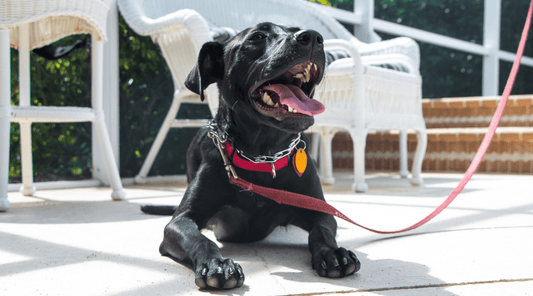
Dog Crate Sizes: Can a Crate Be Too Roomy?
Dawn Miller Apr 17, 20254 Minute ReadDog crate sizes can be tricky. The other day, I walked into the living room to find Pixie curled up like a shopping mall cinnamon roll in Bruno’s crate. Now, to be honest, Bruno isn't too fond of his crate, preferring his rug in the living room, except during storms. But still, I had a battle for territory on my hands.
Now, Bruno’s a big dog—he practically needs a studio apartment for a crate. And Pixie? She’s a feisty little terrier who thinks she’s the queen of everything.
Bruno just stared at her from across the room, too polite to claim his own space back—as he predictably settled on his rug. Typical Bruno. And of course, Pixie looked at me like, Guess it's mine now.
Figuring out what size crate isn't as simple as choosing the right size dog bone. Too small, and your dog’s cramped like they’re flying coach on a budget airline. Too big, and they feel lost, like they’ve rented out an entire mansion—complete with a bathroom. Oh, no!
So, we have the Goldilocks dilemma on our hands. Fortunately, some rules of thumb have been developed by K9 experts.
What Size Crate Do I Need for My Dog?
The goal is to find a dog crate that provides enough room for your dog to turn around comfortably. They shouldn't have to tetris themselves into the sides of the crate to head for the door.
As I alluded to earlier, dogs who are in a crate too large for them may decide that one corner is a potty, especially if they're puppies, seniors, or not house-trained (at any age).
If you have a puppy, this may mean starting in a smaller crate and working your way up...or getting a crate with a divider. Crates are relatively inexpensive, and barely used ones have good resale value on local pickup sites like Facebook Marketplace, Offerup, and NextDoor.
Crate Size Guidelines:
- Small Breeds: Think chihuahuas, smaller terriers (that's not Pixie), and dachshunds. Usually, a 24-inch crate will do the trick, and as low as 18" will work for toy-sized dogs. Most puppies also need around 18-24" of space.
- Medium Breeds (Pixie's Goldilocks Zone): Beagles, mid-sized terriers, border collies, and bulldogs generally do well with crates around 30 inches.
- Large Breeds (Bruno’s Hotel Suite): Labs, German shepherds, and golden retrievers typically need 36 to 42-inch crates.
- Giant Breeds: If you’ve got a Great Dane or a St. Bernard, lucky you! You’re looking at 48 inches or more. No ducking.
How to Measure Your Dog for a Crate
- Length: Measure from your dog’s nose to the base of their tail. Add about 4 inches to be safe.
- Height: Measure from the floor to the top of their head when sitting. Again, add a few inches.
- Width: Usually, you won’t have to measure this. But make sure they can turn around comfortably. If you have a portly pup, a little larger crate can accommodate their agility level.
How to Measure a Dog Crate
If you inherited a dog crate from a friend or picked it up at a garage sale, you may not know how big it is. Is it 48 " long or diagonal? It matters.
When I first picked out a crate for Bruno, I eyeballed it and ended up with something better suited for Pixie’s size. So, a tape measure is your best friend here.
Dog crates are measured by length primarily. So, if you see an 18" crate, that's its longest side.
Types of Dog Crates
Now, the fun part. It’s like shopping for furniture—your dog’s crate should suit their lifestyle and personality. Pixie likes her cozy den, while Bruno likes his wide open spaces.
Here's a look at types of crates for dogs along with some pros and cons.
Wire Crates / Collapsible Crates:
- Easy to clean and foldable for travel.
- Good airflow, which is perfect for dogs who run hot (like Bruno after a sprint at the park).
- Not ideal for escape artists, though. Pixie once wiggled her way through a half-closed latch.
Plastic Crates:
- Great for travel and dogs who like that den-like feeling.
- Durable and easy to clean.
- Limited visibility can be calming for anxious dogs.
- May develop cosmetic wear faster
Soft-Sided Crates:
- Perfect for small dogs and road trips.
- Light and portable.
- Not Pixie-proof. Smart dogs like Pixie dogs can learn to unzip cloth crates like some kind of tiny, furry Houdini. Even if there is a double locking system to prevent this, they may try to follow your lead and tear up the crate.
Heavy-Duty Crates:
- Built for big dogs or escape artists.
- Ideal for dogs going through their teenage rebellion phase.
Top Load / Broad Side Load Crates:
- Gives you options for how best to crate your dog.
- Usually more expensive
Wire Crate Covers:
- Not technically a type of crate. But these allow you to convert a wire crate into a den-like crate while retaining its collapsibility.
Crate Training Tips
1. Make It Cozy
Dogs' ancestral wolves live in dens. Dens are a place of safety and comfort for wolves. Turning the sterile crate into an inviting dog den is the first step to helping your dog welcome this new addition to your home. Giving them a meaty dog bone as a house-warming present sure can help.
2. Start Small and Build Up
Leave the crate open and let them explore on their own. Throw in a couple of beef lung bites as little surprises. Pixie will do anything for these single ingredient organ meat treats.
Let them come and go freely.
Increase the appeal. Give them a meaty marrow bone. You hope that they'll choose to stay in there while they enjoy it. But don't force it at this point. Give them dog bones only when they enter the crate and they'll figure it out.
3. Use Positive Reinforcement
After the initial exploration, sit down with them and the crate. When they go into the den (I mean crate), praise them and give them a treat.
Associate good things (dog treats and praise) with the crate.
I’ve had the best luck when I use high-value treats like K9 Connoisseur’s beef lung bites. Pixie actually started running to her crate when she saw me holding the bag.
If your crate is big enough, give them pets while in the crate just for good measure.
4. Avoid Using the Crate as Punishment
As long as they see the crate as a safe and comfortable place, they'll willingly go there when they're anxious, scared, or just want to relax.
5. Associate a Command Word
When they go in the crate, say "go to crate" and give them a treat and praise. Once they consistently go into the crate for a treat, increase the distance. Say "Go to crate" when they're not in the crate. When they go in, give them a treat and praise.
This is just one example of how to use positive reinforcement training to teach your dog useful skills. Ready to take your training to the next level? Join our 7-Day Dog Training Challenge and see what your dog can achieve!
👉 Join here
Available On:


Disclosure: This article may contain affiliate links, which means we may earn a small commission if you make a purchase through these links—at no extra cost to you. We only recommend products we trust and believe will benefit you and your K9.



